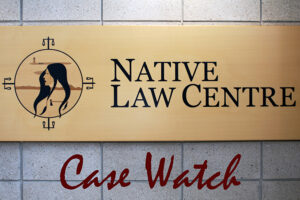Applicant’s motion for summary judgement denied. A Children’s Aid Society did not meet its onus for evidence in the pursuit of an order to place a child in extended care with no access.
The Applicant, the Children’s Aid Society of Brant (“The Society”), was seeking preliminary findings, protection findings and an order of disposition placing the child, M. G-D. (“M.”) born in 2017 and aged one year a the time of this application, in extended care with no access. The motion for summary judgment has been denied. There is ample evidence that M. is a medically fragile child. He has been diagnosed with a serious congenital heart condition known as ventricular septal defect as well as double outlet right ventricular transposition of the arteries, pulmonary stenosis and pulmonary atresia. He required the administration of oxygen at birth, has had heart surgery in June 2018 and will require further surgery in the future. M. must attend Sick Children’s Hospital in Toronto on a regular basis for cardiac follow-up, checks of his oxygen and saturation levels as well as close monitoring of his weight. There was additional evidence that demonstrated that when M. becomes ill he can become very ill very quickly and thereby requires timely medical attention.
The respondent father indicated that he identifies as Ojibway but does not have a “status card” and that the child does not have status as First Nations. The Society did not, despite court instruction to do so, clearly assess whether the child was First Nation, and if so whether there was an Indigenous community that was a party. It was apparent during numerous discussions and stand-downs that occurred, that no one understood precisely what questions needed to be asked or what the test was, let alone how to apply the information obtained to the legal test. In a child protection proceeding it is a vital question and a determination that the Court is statutorily obligated to make. M. is a young child who has been the subject of an application seeking extended care without access and has been in the Society’s care his entire life. His right to an orderly and expeditious hearing of the pertinent issues should never have been compromised by the lack of follow through on legislatively prescribed requirements. Section 90(2) of the Child Youth and Family Services Act reads as follows: “As soon as practicable, and in any event before determining whether a child is in need of protection, the court shall determine, (a) the child’s name and age; (b) whether the child is a First Nations, Inuk or Métis child and, if so, the child’s bands and First Nations, Inuit or Métis communities; and (c) where the child was brought to a place of safety before the hearing, the location of the place from which the child was removed.”
The early determination of whether a child is First Nation and the appropriate Indigenous community is a particular priority for a number of reasons. First, it triggers an obligation by the Society to meet the child’s cultural needs. Second, if there is an identifiable Indigenous community, that community is a party to the proceeding and service is required. Child protection proceedings are conducted in the adversarial, not the inquisitorial style. The Court thus must rely on the parties to provide the requisite evidence in order to determine the issues. In the Court’s view, the Society’s assertion that its worker was only “informed” of the father’s status through service of his affidavit on November 1, 2018, does not assist it. Parents caught up in child protection proceedings are often stressed and vulnerable. It is not reasonable to assume that the parents will understand the need to self-identify at an early stage. Even where the parents have counsel, counsel’s primary obligation is to his or her client. When a child is in Society care, the Society is that child’s guardian. The Society, therefore, has an obligation to that child to ensure these inquiries are made early and proactively.
These events have also been a “wake-up call” to this Court. Although the Court is dependent on parties providing evidence, the Court should be extremely mindful of its supervisory role to ensure that findings are, indeed, addressed “as soon as practicable”. In 2015, the Truth and Reconciliation Commission released a Call to Action under the heading Child Protection. It called upon the federal, provincial, territorial and Aboriginal government to commit to reducing the number of Aboriginal children in care. To that end, it asks the governments inter alia to “[e]nsure that social workers and others who conduct child welfare investigations are properly educated and trained about the potential for Aboriginal communities and families to provide more appropriate solutions to family healing.” It also implored governments to establish as an important priority a requirement that placements of Aboriginal children in temporary and permanent care be culturally appropriate. Neither of these steps can be effected if the Society is not diligent in ensuring early identification of First Nation children and their bands or Indigenous communities.


